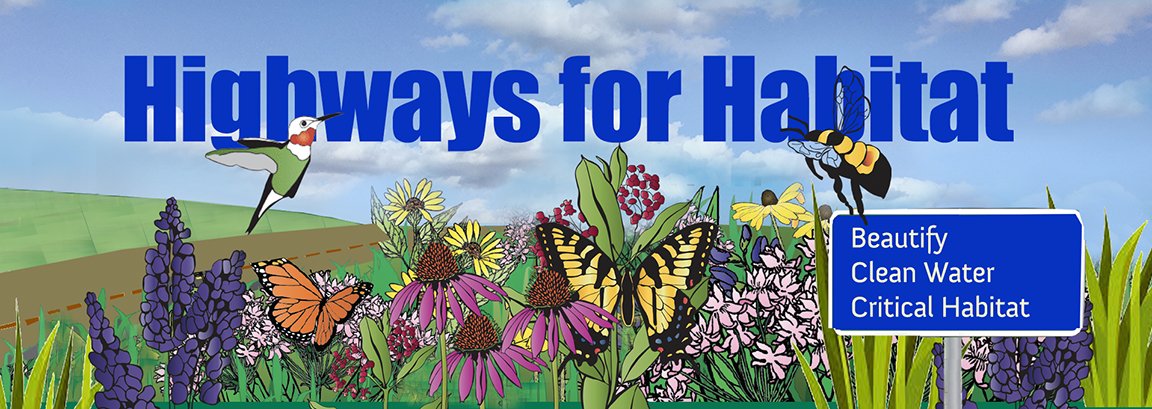Highways for Habitat in Minnesota
A coalition of highway infrastructure and conservation advocates have banned together to support a new statewide program to significantly increase critical roadside habitat for pollinators, birds and wildlife. Native wildflowers will of course be beautiful and add to visual appeal. And there are many other important benefits to this program:
helps at-risk monarch butterfly, bumble bee and migratory bird species recover
reduce costs for mowing and herbicide treatments
support infrastructure of the roadway and reduce erosion
filters and protects water quality, manages stormwater runoff
reduces soil erosion and rejuvenates soil health
blocks agricultural pesticide drift and improves air quality
moderates climates and absorbs carbon
provides living wind and snow breaks
contributes to highway safety
provides wildlife travel and migration corridors
improves and preserves Minnesota for future generations
What can you do? We need your help.
This new legislative bill will be proposed soon in the Minnesota House of Reps. Natural Resources and Transportation Committee. In order for this important program to be approved, both house and senate legislators need to vote YES. Please contact your legislator and governor in an email or phone call. Simply let them know you are in support of this bill and encourage them to vote YES for HIGHWAYS FOR HABITAT.
You can find who represents you in the legislature and their contact here.
Background
Minnesotans care about the environment, want cleaner water and more ecologically responsible practices on public lands. Pollinator, bird and animal species are disappearing at alarming rates. World Wildlife Fund reports wildlife and insect populations have plummeted by more than two-thirds in the last 50 years. The Wildlife Society reported that one in four bird species are gone in less than a lifetime. Factors contributing to species decline include loss of habitat, fragmentation of habitat, pesticide pollution and climate change. Roadsides have been identified by many scientists and wildlife organizations as potential for critical wildlife habitat and migration corridors.
Native plants have extensive root systems that absorb storm water runoff chemicals that would otherwise enter waterways and help prevent erosion – both important issues especially along rural roadways. Native grasses and flowering plants provide habitat, decrease water and pesticide drift pollutants, provide soil stabilization and erosion control, provide natural snow and wind breaks, increase wildlife corridors/connectivity, carbon sequestration, and increase driver safety and driver experience.
Scientists have been alerting us for decades about climate crisis and species decline. Monarch populations dropped 99% in the west since the 1980s. U.S. Fish & Wildlife Service finds that “Ground Nester Birds nesting in highway rights-of-way are vulnerable to direct mortality due to mowing practices. Most states mow rights-of-way to maintain sight distances and for esthetic reasons. Mowing for esthetic purposes instead of vegetation control may be possible to forego.” Songbird decline is driven by loss of insect populations, pesticide use and habitat loss. Roadside herbicide spraying is costly and destroys both target and non-target plant species.
This is a historical time when climate crisis and species extinctions are upon us, and we need to take immediate actions locally and nationally. The actions we take now will be looked upon in history as part of the solution or part of the problem.
